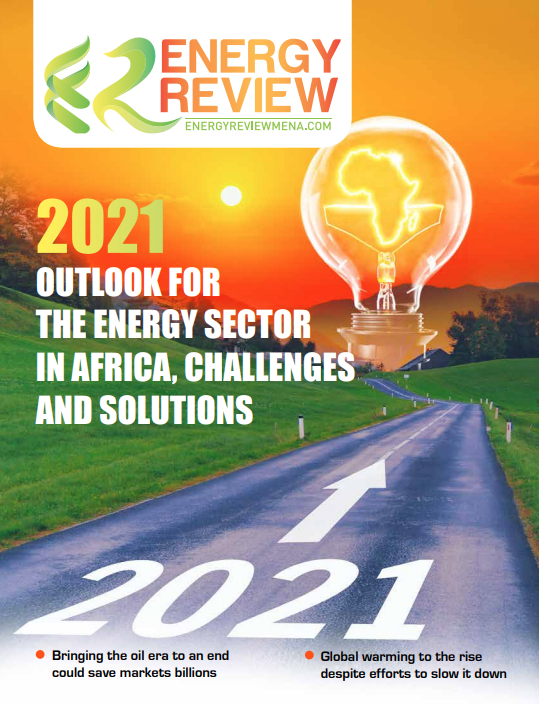The global growth of renewable energy will slow for the first time in 20 years due to the impact of the coronavirus pandemic, which will “hurt but not halt” the rise of clean energy.
The International Energy Agency (IEA) has called on governments to put clean energy at the heart of their coronavirus economic recovery plans, as it forecast the first slowdown in new renewable power installations worldwide in two decades.
There is concern that developers will build fewer wind farms and solar energy projects this year compared with a record roll out of renewables in 2019. A rebound is possible in 2021, according to the IEA, if critical government decisions made within the next few months support a green economic recovery from the pandemic.
New figures from the IEA predict that the world will grow its capacity of renewable energy by 6% or 167 GW this year. The forecast growth is 13% less than the amount of new capacity which started up in 2019.
Looking further ahead, the IEA noted that 2021 was forecast to see renewable power additions bounce back to 2019 levels. The agency, which had expected 2020 to be a bumper year for green energy, slashed its two-year forecast for growth in renewable capacity by nearly 10 percent. It cited supply chain disruptions, construction delays, social distancing measures and financing challenges.
“The resilience of renewable electricity to the impacts of the COVID-19 crisis is good news but cannot be taken for granted,” Fatih Birol, the IEA’s executive director, said in a statement. Birol noted that although countries were still building new wind turbines and solar plants, this was happening at “a much slower pace.”
“Even before the COVID-19 pandemic struck, the world needed to significantly accelerate the deployment of renewables to have a chance of meeting its energy and climate goals,” he added.
“Amid today’s extraordinary health and economic challenges, governments must not lose sight of the essential task of stepping up clean energy transitions to enable us to emerge from the crisis on a secure and sustainable path.”
The slowdown is likely to be more severe in Europe. The IEA expects the amount of new renewable energy rolling out this year to fall by a third to its lowest annual growth rate since 1996.
The IEA warned that lockdown measures, which at their peak affected more than half the world's population, would have "far-reaching" consequences, as the world grapples with a crisis that has sent energy demand plummeting and threatens a deep economic contraction.
While sectors supplying electricity, solar, wind and hydropower, would be largely resilient in the crisis, it said, the market for biofuels used mainly in transport would be "radically" altered as global travel is frozen and oil prices plummet.
Many countries have pledged to increase their use of renewables to meet tough climate targets and the IEA urged governments to redouble those efforts as they plan for post-virus economic recovery. It cautioned that a predicted reduction in global energy-related CO2 emissions of up to 8 percent in 2020 was nothing to celebrate.
“Putting emissions into a structural decline needed renewables to grow much faster across all sectors even before the COVID-19 crisis,” the report said. “To regain and exceed the growth rates seen in the years before the pandemic, policy makers need to put clean energy, including renewables and energy efficiency, at the centre of recovery efforts.”
Rebound
In its updated forecast, the IEA said that overall demand for renewables is expected to increase this year, bolstered by their use in the electricity sector, where green energy has accounted for record shares of power going into the grid in some countries.
This is partly down to their priority access to the grid in many markets, and declines in energy demand during lockdowns. It has also been boosted by record increases in capacity in 2019, which saw 192 GW of new installations connected to the grid - a 7 percent increase from 2018.
Revising down a prediction made in October, the IEA now expects some 167 GW of renewable capacity to become operational this year - a decline of 13 percent from 2019, and the first downward trend since 2000.
However, this will still add 6 percent to the global renewable capacity total this year - more than the combined size of power systems in both North America and Europe - with solar and wind accounting for the vast majority of new installations.
Meanwhile, both the United States and China are expected to boost their renewable capacity this year and next, as firms rush to complete projects before the expiry of government incentives. The IEA also predicted a “rebound” in 2021, nearing 2019 levels, as most of the projects delayed this year come online.
Opportunity
Technologies with long lead times, like hydropower and offshore wind, were not expected to see significant impacts from the virus. However, the report said the economic downturn is expected to deal a severe blow to transport biofuels, like ethanol and biodiesel, which are mostly consumed when blended with gasoline and diesel.
Total transport biofuel production is expected to contract by 13 percent in 2020. But the IEA said the crisis opens a window of opportunity in aviation if governments include environmental conditions in bailout packages, noting the 2 percent sustainable aviation fuel requirement in a rescue proposal for Air France-KLM.
In Germany, companies including RWE AG and Uniper SE are running coal generators less and relying more on gas plants. Electricite de France SA warned low demand will mean output from its nuclear reactors will fall by more than a fifth this year.
A similar dynamic is playing out in the U.S. Retail power sales across the 50 states will sink 4.5% this year, the most since the U.S. Energy Information Administration began keeping records in 1949. Coal is on pace for the first time ever to produce less electricity nationwide than renewable energy.
In Asia, power consumption is forecast to rebound faster. Nations where industrial production accounts for a large chunk of the economy, such as China and India, experienced some of the strictest lockdowns; a combination which hammered demand.
While the IEA sees demand in China, the world’s top energy user, falling this year, official estimates put consumption in May already above last year’s levels and on course to grow as much as 3% in 2020.
Eventually, global demand for power will resume growing as nations turn more to electricity to power cars, heat homes and more, analysts said. But for now, the power sector faces a long, slow recovery.
Experts said the crisis could provide an opportunity for green energy to permanently take the place of highly polluting fossil fuels like coal.
“We may come out of COVID with emissions going down, since renewables have been able to take more relative space, pushing out some of the worst of fossil fuels,” said Glen Peters, research director, at the Center for International Climate Research.
Some of the steepest drops in electricity consumption will be in Europe, where 2020 demand is forecast to fall 8%, according to the IEA.









